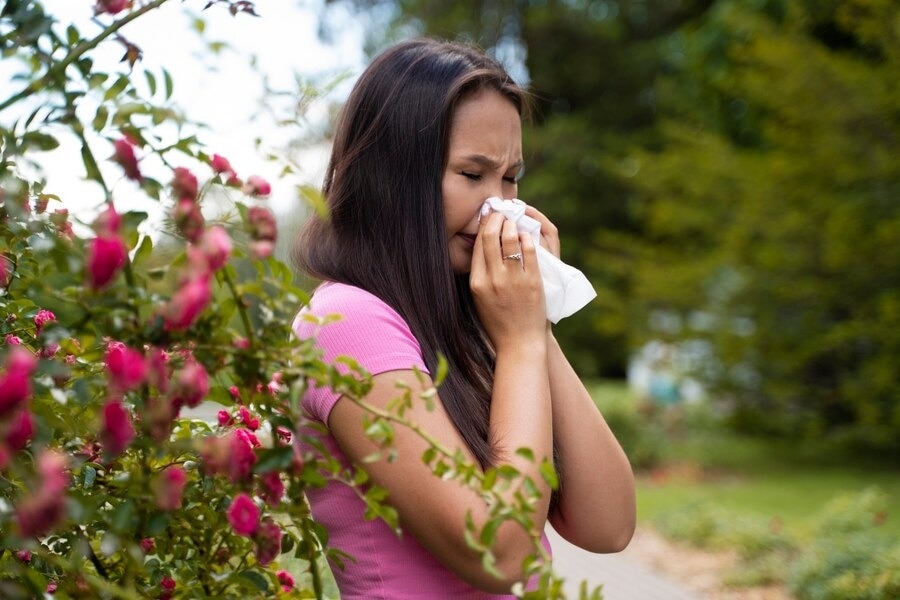During the monsoon, humidity levels rise, creating damp surfaces and exposing us to higher levels of indoor pollutants, which can trigger respiratory allergies.
Monsoons bring relief from the scorching heat of summer, but they also introduce a host of potential allergy triggers. The reduction in small particles by rainfall is generally modest. During the monsoon, humidity levels rise, creating moist surfaces and exposing us to higher levels of indoor pollutants, which can trigger respiratory allergies. With allergy season upon us and the added challenges of humid monsoon conditions, ensuring a healthier living environment at home has never been more crucial. Here we share valuable information on how one can protect their home from allergens this season despite the challenges posed by the monsoon season.
According to Dyson engineer Sam Railton, “Heavy rainfall is often assumed to substantially clean the atmosphere. However, it only removes larger particles from the air by around 30%, and has little effect on smaller particles. Invisible pollutants linger and, combined with higher humidity, can encourage the growth of mould and mildew due to humid conditions. The indoor environment can become an ideal breeding ground for allergens, which can trigger reactions in vulnerable people.”
Common triggers of monsoon
- Mold and mildew: Moisture in the air can create a favorable environment for mold and mildew growth. Indoor areas, such as bathrooms, kitchens, and basements, can be particularly susceptible. Mold in particular is associated with the onset of symptoms such as sneezing, coughing, watery eyes, and respiratory problems.
- Dust mites: Increased humidity can lead to increased dust mite populations. These microscopic creatures thrive in damp conditions (such as in mattresses) and can cause allergic reactions, such as itching, wheezing, and rashes in sensitive individuals.
- Pollen: Although pollen levels are typically lower during monsoon season, certain plants and grasses release pollen particles that can trigger allergies in susceptible people. Symptoms may include nasal congestion, itchy throat, and watery eyes. Additionally, pollen cells can break down in humid conditions, releasing proteins into the air that can cause allergic reactions.
- Prolonged time spent indoors during monsoon can lead to increased exposure to indoor pollutants that can intensify symptoms in people with allergies. Exposure to VOCs (volatile organic compounds) increases, while outdoor allergens trapped indoors add to the problem.
Tips to control monsoon allergies
The first step to managing monsoon allergies is to take proactive steps to reduce exposure to allergens and other indoor pollutants. Here are some tips to help you manage monsoon allergies:
- Keep indoor spaces clean and dry
Maintaining a clean and dry environment during the monsoon is critical to prevent dust and mould build-up. In light of the findings and considering that dust storms regularly occur during the pre-monsoon season, regular dusting and vacuuming of areas prone to dust build-up such as carpets, curtains and shelves is essential. Ensuring that your home is well-ventilated can also reduce indoor humidity levels, thereby discouraging mould growth. - Use allergen-proof bedding
Bedrooms, which are often a haven for dust mites during the monsoon, can be made better clean by investing in allergen-proof mattresses and pillowcases. These special covers create a barrier against dust mites, helping to reduce exposure and the risk of nighttime allergic reactions. When going outdoors, especially on windy or dusty days, wearing a face mask designed to filter out small particles like pollen, dust, and mold spores can help reduce exposure to airborne allergens. - Use air purifiers
Clean air is essential for overall well-being, especially for children, the elderly, and people with pre-existing respiratory conditions. Having an air purifier is one of the most effective ways to remove a wide range of air pollutants. Advanced filtration technologies, such as HEPA and carbon filters, can remove dust, pollen, pet dander, smoke, and VOCs. - Tips for outdoor activities:
If you need to go outside during the monsoon, wearing sunglasses and a face mask can help protect your eyes and respiratory system from exposure to allergens. After returning home, showering and changing clothes can help remove any allergens you may have brought in from outside.
The rainy season doesn’t have to be a sneezing, itchy struggle. By taking proactive measures like maintaining cleanliness, reducing humidity, using allergen-proof bedding, and investing in air purifiers, you can create a comfortable, allergy-free environment in your home. Let’s welcome the rains and make the most of this beautiful season.
